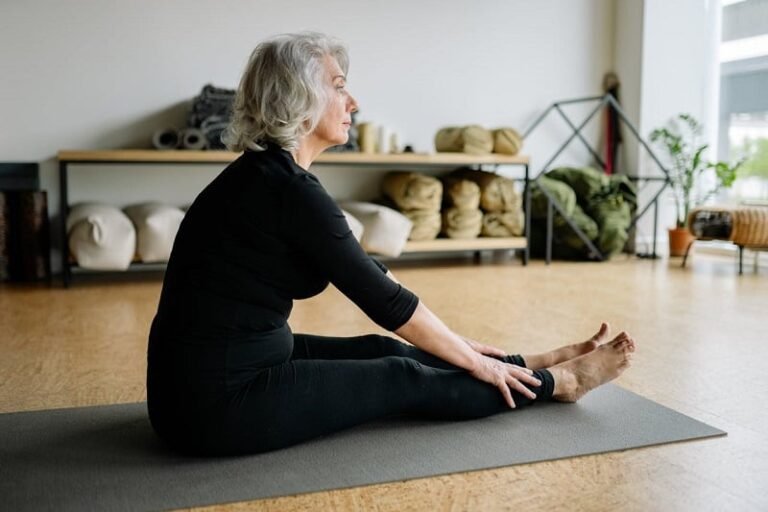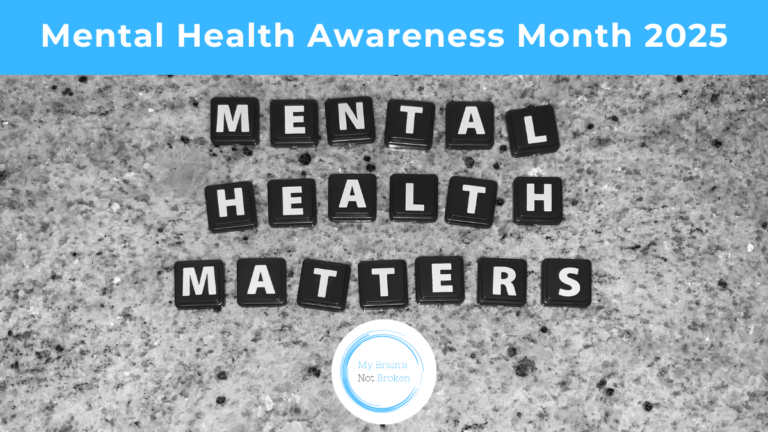College is a mix of exciting and exhausting moments. On one hand, it’s full of chances to grow, meet people, and try new things. On the other, it can come with a lot of pressure—academic stress, a busy social life, and figuring out how to be an adult. It can be overwhelming, and for plenty of students, it can lead to burnout. That kind of mental and emotional fatigue can make it hard to stay motivated or even just feel okay day-to-day.
If you’re feeling like that—or you know someone who is—it’s worth talking about. The rest of this article breaks down some ways to spot burnout and deal with it, so college doesn’t have to feel like a constant uphill climb.
Recognizing the Signs of College Burnout
Some of the more common signs of burnout in college students might look like:
- Chronic fatigue: Persistent tiredness, even after getting enough sleep.
- Lack of motivation: Finding it difficult to be enthusiastic about academic or social activities.
- Difficulty concentrating: Struggling to focus during lectures or when studying.
- Increased anxiety: Intense feelings of being overwhelmed by deadlines or responsibilities.
- Irritability: Suddenly having short-tempered reactions, especially to minor inconveniences.
- Physical symptoms: College burnout can lead to headaches, digestive issues, or muscle tension.
Burnout among students is surprisingly common. Research suggests that more than half of university students around the world experience high emotional exhaustion. On top of that, over 55% are highly cynical about school, and more than 41% feel like they’re not achieving much at all.
The upside? Spotting the signs early makes a big difference. With the right support and habits, it’s possible to turn things around before burnout takes a bigger toll.
Causes of Burnout in College Students
Academic burnout begins with many of the stressors that are unique to the college environment. From perfectionism to overcommitting to taking on too many extracurriculars, the risk of burnout in college students is higher than ever. Understanding the common causes helps students find effective strategies to combat them.
Academic pressure
According to research, 94% of college students feel overwhelmed by academic pressure. That pressure can cause students to procrastinate on work, which ultimately translates to poor or failing performance.
To overcome academic stress and find success, students can try several techniques, including:
- Breaking tasks into smaller, more manageable chunks
- Using campus resources like tutoring centers and professors’ office hours
- Setting realistic expectations instead of striving for perfection
Lack of sleep
Studies suggest that sleep is linked to stress and burnout. Healthy and adequate sleep is vital for emotional and energy regulation. Thus, poor sleep quality increases the chance of academic burnout.
Students can take steps to prioritize healthy sleep habits by:
- Establishing and maintaining consistent sleep schedules
- Not drinking caffeine or energy drinks later in the day
- Creating a restful, pleasant, peaceful sleep environment
- Avoiding electronic distractions in the evening hours
- Limiting screen time in the hours before bed
Financial stress
College costs add up fast, and tuition’s just one piece of the puzzle. Between housing, meal plans, textbooks, tutoring, and everyday expenses, it’s no wonder so many students end up working part-time just to keep up. While that makes sense financially, it can pile on more stress and stretch your time even thinner.
If money worries are making everything feel harder, there are some things that can help ease the load. Students might want to try the following to ease financial strain:
- Making a simple budget (and actually sticking to it)
- Keeping track of what they’re spending each month
- Applying for scholarships, grants, or other aid
- Checking in with campus financial aid advisors
- Looking into flexible work-study gigs that fit around their class schedule
Social expectations
The social expectations of college life can be overwhelming. It’s difficult for some students to balance their newfound freedom and successfully juggle friendships, extracurriculars, and academics. If social expectations influence school success, it’s time to make a change.
Students can reduce social stress and focus on academic success by:
- Setting boundaries with friends
- Limiting extracurricular activities to avoid overcommitment
- Scheduling time for self-care
Poor time management
Research on student time management shows it’s positively associated with self-control and study engagement. Some studies indicate that healthy time management is critical for academic success.
Improving time management skills will help students:
- Be more productive
- Focus better
- Find a healthy work-life balance
- Reach academic achievements
Despite these findings, an estimated 90% of college students still procrastinate. Strategies students can use to master time management skills and avoid burnout include:
- Using planners to stay organized
- Downloading apps to manage tasks
- Prioritizing deadlines based on urgency
- Allocating specific times for study sessions
- Scheduling breaks
Strategies for Dealing with College Burnout
Burnout doesn’t just go away on its own—it usually sticks around until you do something about it. The good news? There are effective ways to start feeling better and get back on track. It’s all about finding some balance again and making space for things that support your well-being.
There’s no one-size-fits-all fix, but a handful of simple changes can make a big difference in how you feel day to day. Here’s how to deal with burnout in college.
Prioritizing rest and recovery
We’ve already discussed how critical rest is for college students. Quality sleep and rest allow for physical and mental rejuvenation while helping the body (and mind) recharge. Best of all, they can be immediately implemented.
To focus on prioritizing rest, students should:
- Take regular breaks to keep the mind sharp during study sessions
- Improve the sleep hygiene practices discussed earlier
- Use relaxation techniques like yoga, meditation, or reading
Setting realistic academic goals
When students place unrealistic expectations on themselves, whether related to coursework, social interactions, or working outside of school, it can exacerbate their risk of burnout.
To regroup and set more achievable goals, students can:
- Assess their current goals and create more realistic ones based on capability and time
- Take advantage of the academic support provided on campus via tutoring or study groups
- Remember it’s about progress more than perfection — being “perfect” isn’t possible
Practicing stress management techniques
Stress is a huge part of college burnout, but there are ways to manage it before it takes over. Mindfulness exercises and simple relaxation techniques might not solve everything, but they can reduce stress and help you feel more grounded when things get overwhelming.
Some ways to ease stress and prevent academic burnout include:
- Meditation (even just a few minutes a day can help)
- Guided breathing exercises—great during study breaks
- Journaling to clear your head
- Yoga or stretching to release tension
- Hobbies that relax you, like painting, baking, writing, or getting outside for a hike
- Any kind of movement—whether that’s hitting the gym or just going for a walk
Reaching out for support
If you’re feeling burned out, you don’t have to handle everything on your own. Reaching out for help isn’t a weakness—it’s actually one of the smartest things you can do when things get overwhelming.
Some ways to get the support you need:
- Talk to your professors—extensions or flexibility might be an option
- Ask about accommodations if you’re struggling with specific challenges
- Check in with on-campus counseling or mental health services
- Join a student or peer support group—chances are, you’re not the only one feeling this way
- Look into tutoring if certain classes are weighing you down
- Connect with a mentor or advisor who can help you figure things out and keep you grounded
How to Prevent College Burnout Before It Starts
The best way to deal with burnout is to try to stop it before it starts. That means paying attention to how you’re feeling day to day and building in healthy habits early, before stress piles up.
Preventing burnout in college is about being realistic with your time, knowing your limits, and making room for things that keep you grounded. A little bit of planning and self-awareness can go a long way.
Creating a manageable schedule
Plan ahead to reduce the risk of cramming and overload. Having a well-structured schedule keeps students organized and reduces stress. With the right planning, it’s easier to stay on top of work, meet deadlines with little to no stress, and still leave time for self-care.
Helpful tools and tips students should use include:
- Calendars or apps that help organize coursework, deadlines, and social events
- Allocating time to relax and refresh
- Avoiding last-minute cramming by setting and sticking to consistent study routines
Building healthy habits
Healthy habits that focus on mental and physical health play a critical role in maintaining resilience. Taking care of the body and mind makes managing college stress and preventing burnout easier throughout the school year. Keep in mind, it’s the small and consistent actions that can make the biggest difference over time.
It’s easier for students to maintain energy and focus when they stay committed to:
- Eating balanced meals rich in nutrients
- Staying hydrated throughout the day
- Incorporating regular exercise into daily routines
- Prioritizing sleep
Learning to say no
After years of doing what teachers, parents, and coaches tell them to, the idea of being able to say no can feel foreign to a student. However, there’s tremendous power in knowing limits and setting boundaries that protect students, especially since consistently overcommitting almost always leads to exhaustion.
You can start to protect your peace by:
- Setting boundaries with friends and family for social events
- Limit extracurricular activities when needed
- Practice being assertive so declining additional responsibilities when necessary becomes second nature
Moving Forward with a Balanced College Experience
College should be an exciting and rewarding experience, not one filled with constant stress that leads to burnout. With the right self-care for college students and time management strategies, students can achieve both academic success and personal well-being.
Online platforms like Talkspace offer convenient and accessible online therapy options tailored to college students facing stress and burnout.











